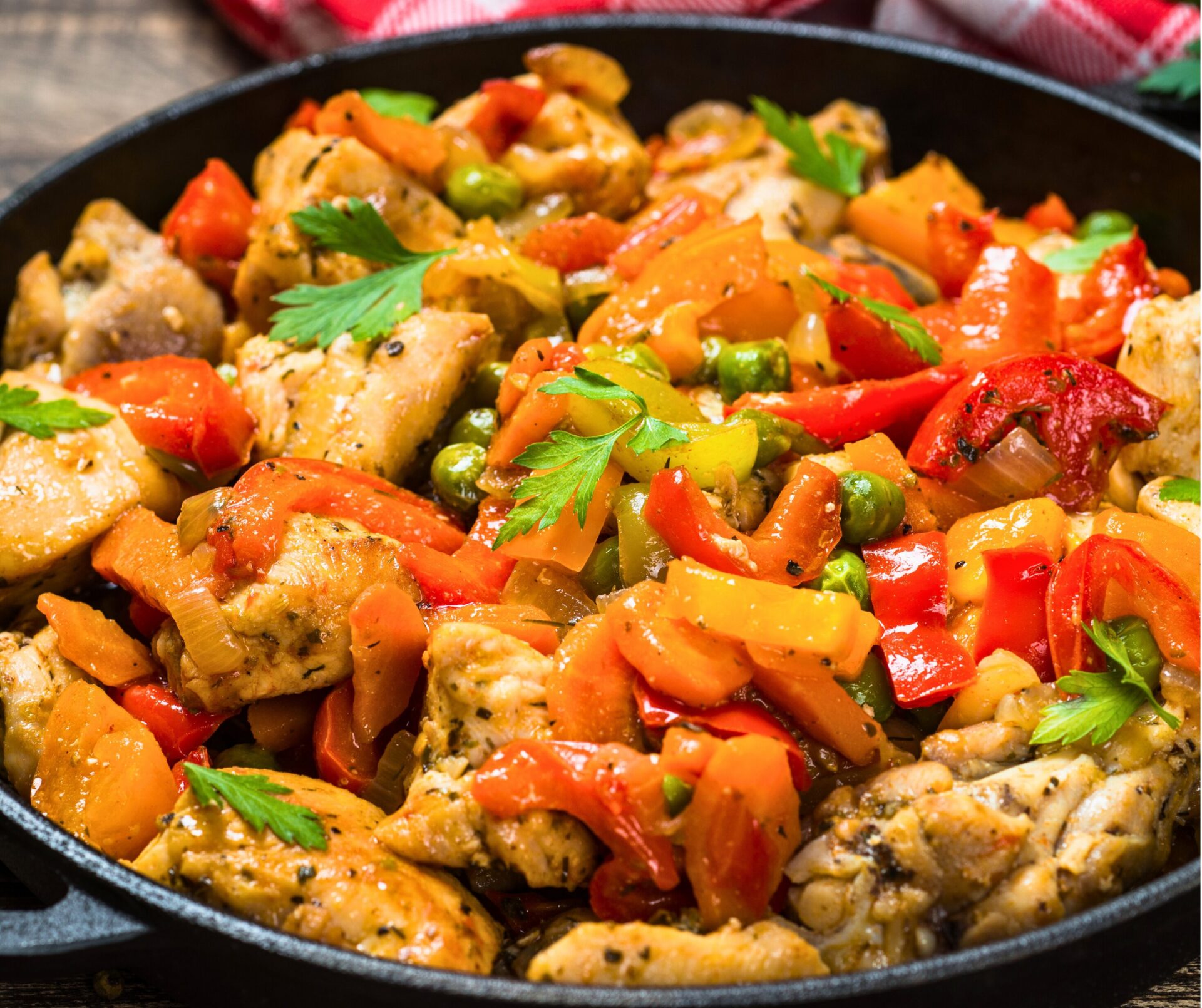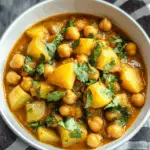Chicken stir-fry embodies a vibrant fusion of flavors and textures, combining tender chicken pieces with a medley of fresh vegetables, all brought together by a savory sauce. This beloved dish finds its roots in Chinese cuisine but has transcended borders, becoming a staple in kitchens worldwide. The concept is straightforward: quick cooking over high heat, typically in a wok, to ensure that ingredients retain their crispness and nutritional integrity. This simplicity and efficiency make chicken stir-fry a go-to meal for busy weeknights, family dinners, and even restaurant menus.
The popularity of chicken stir-fry can be attributed to its incredible versatility. Home cooks appreciate the adaptability of the recipe, as it can easily be tailored to suit individual preferences and the ingredients available in one’s pantry. Whether you’re working with an assortment of colorful bell peppers, crunchy snap peas, or vibrant broccoli, chicken stir-fry welcomes an array of vegetables that can be mixed and matched to create a personalized culinary masterpiece.
In restaurants, the appeal of chicken stir-fry lies in its quick preparation time and the ability to deliver consistently delicious results. With just a few minutes of stir-frying, chefs can serve a dish that is not only visually appealing but also packed with robust flavors and a satisfying crunch. The dish’s inherent flexibility also allows chefs to experiment with different sauces and seasonings, resulting in unique and memorable variations that can cater to a diverse clientele.
Full Recipe:
- Ingredients:
- 2 chicken breasts, sliced into thin strips
- 2 tablespoons corn oil or any high smoke-point oil
- 3 cloves garlic, minced
- 1 tablespoon fresh ginger, minced
- 1 red bell pepper, sliced into thin strips
- 1 cup broccoli florets
- 2 tablespoons soy sauce
- Salt and pepper to taste
- Optional: 1 tablespoon cornstarch mixed with 2 tablespoons water for thickening the sauce
- Optional: 1 carrot, julienned
- Optional: 1 cup snap peas
- Optional: 2 tablespoons oyster sauce or hoisin sauce for additional depth of flavor
Preparation Steps
- Marinating the Chicken: Begin by slicing the chicken breasts into thin strips. This not only helps the chicken cook quickly but also allows the flavors to penetrate better. In a small bowl, mix 1 tablespoon of soy sauce with a pinch of salt and pepper, and add the chicken strips to marinate for at least 15 minutes. This step can be extended to a few hours if time allows, ensuring the chicken is well-seasoned.
- Preparing the Vegetables: While the chicken is marinating, prepare the vegetables. Slice the red bell pepper into thin strips, cut the broccoli into bite-sized florets, and if using, julienne the carrot and trim the snap peas. Mince the garlic and ginger finely to ensure they release their full flavor quickly when added to the hot wok.
- Setting Up the Wok Station: Heat the corn oil in a wok or large skillet over high heat. The use of a wok is traditional and highly effective due to its shape, which allows for even heat distribution and quick cooking. However, a large, high-sided skillet can also work well. Ensure all the ingredients are prepped and within reach, as the cooking process moves rapidly once started.
Cooking Instructions
- Heating the Oil: Begin by heating the corn oil in your wok or skillet over high heat. The high heat is crucial as it allows for quick cooking, helping to seal in the flavors and keep the ingredients crisp. The oil should shimmer when it is sufficiently heated, but avoid allowing it to smoke, which could impart a burnt flavor to your dish.
- Adding Aromatics: Once your oil is hot, add the minced garlic and ginger to the wok. Stir-fry these aromatics for about 30 seconds. Be sure to keep the ingredients moving constantly to prevent them from burning. This step releases their essential oils, infusing the oil with their distinctive flavors and setting the stage for the rest of the dish.
- Cooking the Chicken: Next, add the marinated chicken strips to the wok. Spread them out in a single layer, ensuring maximum contact with the hot surface. Let the chicken sear without stirring for about a minute. This helps develop a nice crust on the chicken, enhancing both texture and flavor. After the initial sear, stir-fry the chicken for another 3-4 minutes until it’s browned and cooked through. High heat ensures the chicken cooks quickly, retaining its moisture and tenderness.
- Incorporating Vegetables: Add the broccoli florets and red bell pepper strips to the wok. Stir-fry these with the chicken for about 3-4 minutes. The vegetables should become crisp-tender, retaining a bit of crunch while absorbing the flavors from the oil and chicken. If you’re including other vegetables such as carrots or snap peas, add them at this stage as well. The key is to maintain constant motion with your spatula, ensuring the vegetables cook evenly without becoming soggy.
- Adding the Sauce: Pour in the remaining 1 tablespoon of soy sauce, and if using, add any additional sauces like oyster or hoisin sauce. Stir everything together to coat the chicken and vegetables evenly. The high heat will help the sauces reduce slightly, intensifying their flavors and helping them cling to the other ingredients. If you prefer a thicker sauce, mix the cornstarch and water slurry and add it to the wok at this stage. Allow it to simmer for about a minute, thickening the sauce as it heats through.
- Seasoning to Taste: Taste your stir-fry and adjust the seasoning with salt and pepper as needed. This final step ensures a balanced flavor profile, enhancing the natural tastes of the chicken and vegetables. You might also want to add a dash of sesame oil or a sprinkle of sesame seeds at this point for an added layer of flavor and texture.
- Serving: Remove the wok from the heat and serve the chicken stir-fry immediately. It is traditionally served over steamed rice or noodles, which absorb the savory sauce and complement the dish’s textures. For an added touch, garnish with chopped scallions or sesame seeds. These garnishes not only add visual appeal but also an extra layer of flavor and texture.
Historical Background
Stir-frying, as a cooking technique, has a long and storied history that dates back to ancient China. This method was developed as an efficient way to prepare meals quickly using minimal resources. Originally, stir-frying was a practical solution for those who lacked access to large quantities of fuel, as it requires only a small amount of oil and a high heat source, allowing for rapid cooking.
The technique evolved over centuries, with the first written reference to stir-frying appearing in the Ming Dynasty (1368–1644). By this time, it had become a popular method of cooking across various regions of China. The term “stir-fry” itself is derived from the Chinese word “chao,” which means to toss or stir quickly in a hot wok.
The wok, an essential tool for stir-frying, was invented during the Han Dynasty (206 BCE – 220 CE). Its distinctive shape, with a rounded bottom and high sides, allows for even heat distribution and efficient cooking. The wok’s design also makes it perfect for tossing ingredients, ensuring they cook uniformly without burning.
As Chinese immigrants traveled across the globe, they brought their culinary traditions with them, including stir-frying. This technique gained widespread popularity in many countries, adapting to local tastes and available ingredients. For example, in the United States, Chinese immigrants introduced stir-frying in the 19th century, initially in San Francisco’s Chinatown. Over time, it became a staple cooking method in American households, thanks to its versatility, speed, and ability to preserve the nutritional value of the ingredients.
Stir-frying has also influenced other Asian cuisines, including Thai, Japanese, and Vietnamese. Each culture has put its spin on the technique, incorporating local ingredients and flavors. For instance, Thai stir-fries often include fish sauce and basil, while Japanese stir-fries might feature soy sauce and mirin.
Nutritional Benefits
Chicken stir-fry is not only a delicious and versatile dish but also one that offers numerous nutritional benefits. This well-balanced meal can easily fit into a healthy diet, thanks to its combination of lean protein, fresh vegetables, and minimal use of oil.
Protein: The primary source of protein in this dish comes from the chicken. Chicken breasts are a lean protein source, meaning they provide a high amount of protein with relatively low fat content. Protein is essential for muscle repair and growth, making it an important nutrient for those who lead active lifestyles or are looking to build muscle mass. Additionally, protein helps to keep you feeling full and satisfied, which can aid in weight management.
Vitamins and Minerals: The vegetables in chicken stir-fry, such as broccoli and red bell peppers, are rich in essential vitamins and minerals. Broccoli is an excellent source of Vitamin C, which is important for immune function, and Vitamin K, which is vital for blood clotting and bone health. Red bell peppers are also high in Vitamin C and contain significant amounts of Vitamin A, which supports vision and immune function. Including a variety of colorful vegetables in your stir-fry ensures you are getting a broad spectrum of nutrients that support overall health.
Healthy Fats: While stir-frying does require some oil, it uses far less compared to other cooking methods like deep-frying. Using a high smoke-point oil like corn oil, canola oil, or peanut oil ensures that the dish remains lower in unhealthy fats. Additionally, the quick cooking time helps preserve the healthy fats present in the oils, contributing to heart health.
Fiber: The vegetables in chicken stir-fry provide a good amount of dietary fiber, which is essential for digestive health. Fiber helps to keep the digestive system running smoothly and can also aid in maintaining a healthy weight by promoting a feeling of fullness.
Low Calorie and Carbohydrate Content: Compared to many other dishes, chicken stir-fry is relatively low in calories and carbohydrates, especially if served with a moderate portion of brown rice or whole-grain noodles. This makes it an excellent option for those looking to reduce their calorie intake or manage their carbohydrate consumption.
Antioxidants: Ingredients like garlic and ginger, commonly used in chicken stir-fry, are known for their antioxidant properties. Antioxidants help to protect the body from oxidative stress and inflammation, which can lead to chronic diseases. Garlic contains allicin, a compound with potent anti-inflammatory and immune-boosting properties. Ginger, on the other hand, is rich in gingerol, which has been shown to have anti-inflammatory and antioxidant effects.
Balanced Macronutrients: Chicken stir-fry offers a well-balanced mix of macronutrients—protein, carbohydrates, and fats. This balance is essential for providing sustained energy throughout the day. The protein from the chicken, carbohydrates from the vegetables and rice or noodles, and fats from the cooking oil work together to keep your energy levels stable and your body functioning optimally.
Conclusion
To truly enjoy chicken stir-fry, consider the importance of not just the main dish but also how it can be presented and complemented with suitable sides. By utilizing deep bowls, layering your ingredients, and adding garnishes like fresh herbs, sesame seeds, and lime wedges, you can elevate the visual and sensory appeal of the dish. Furthermore, serving the stir-fry in a wok or on elegant platters can add an authentic or refined touch to the dining experience.
Pairing your chicken stir-fry with appropriate side dishes can transform a simple meal into a gastronomic delight. Options like steamed jasmine or basmati rice, fried rice, or various noodles can serve as a perfect base, while stir-fried greens, Asian slaw, and edamame provide nutritious and tasty complements. Adding soups like miso or hot and sour soup, and small bites such as spring rolls, dumplings, and bao buns can enhance the variety and enjoyment of the meal. Fresh salads, whether cucumber or seaweed-based, offer refreshing contrasts that round out the meal.
Chicken stir-fry, with its quick and high-heat cooking method, preserves the nutritional value of its ingredients, making it a healthy and balanced dish. The lean protein from chicken, the vitamins and minerals from vegetables like broccoli and bell peppers, and the antioxidants from garlic and ginger make this dish not only delicious but also beneficial for overall health. By incorporating a variety of colorful vegetables and flavors, chicken stir-fry can cater to different dietary needs and preferences, making it a versatile and beloved recipe across cultures.






